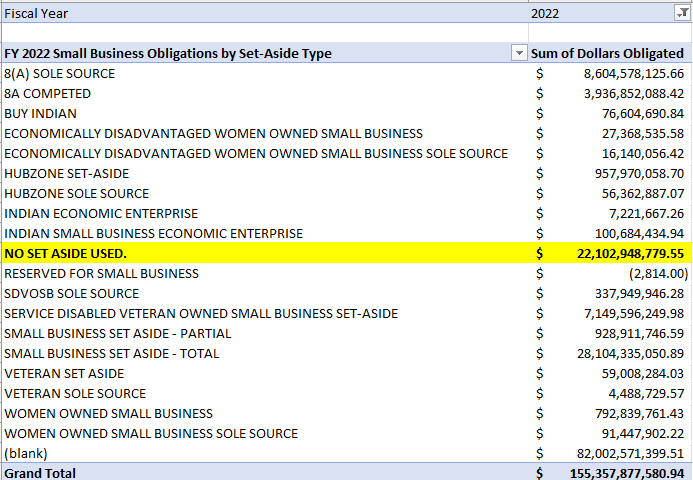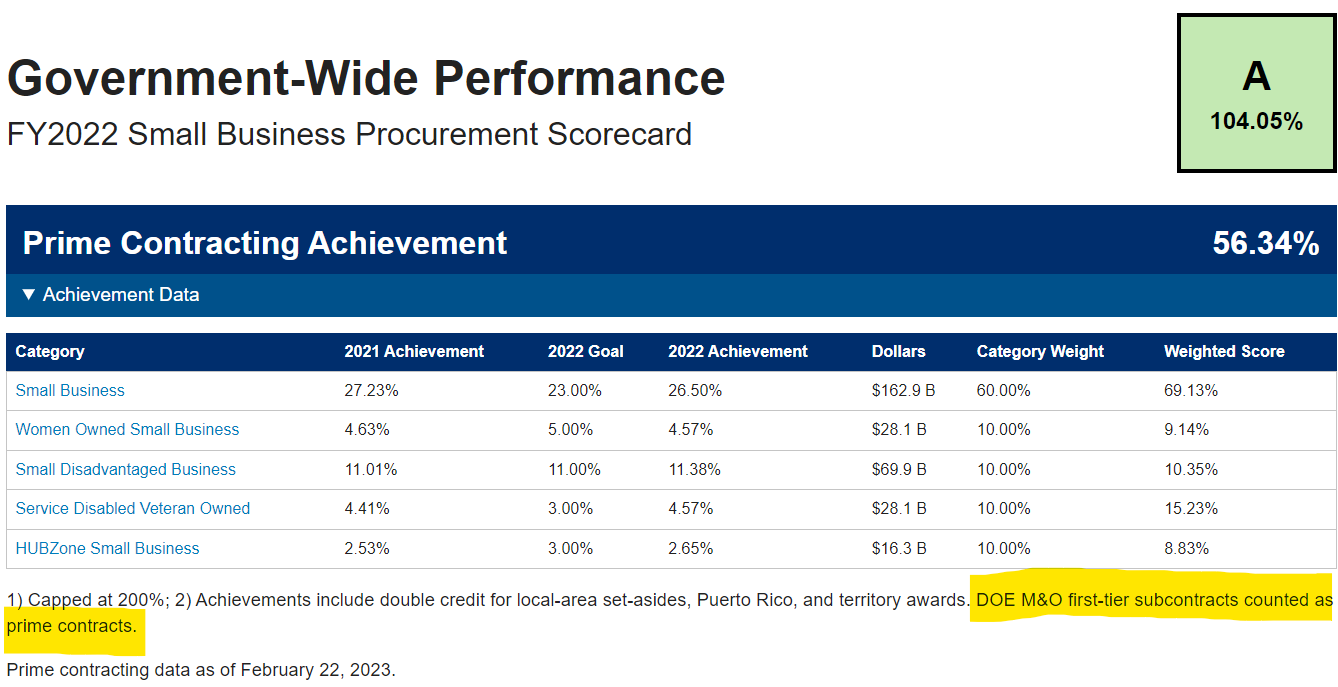Baking the Grade

Uncle Sam claims another “A” using math that allows it to invent phantom small business dollars – ensuring the success of its agencies at the expense of America’s Small Businesses.
Once again, federal agencies are celebrating victories that in many cases, are not due to anything they intentionally supported. After all, goals are about being intentional, right? If we say we’re setting a goal to achieve something, the presumption is we’re going to establish a plan, and take steps to ensure it happens, versus sitting around and hoping for happenstance. If this seems logical to you, the first thing we need to do to correct the math is reduce the dollar amount Uncle Sam claims as happening because of them from $162.9B to $140.8B. Doing this sends the credit back to the small businesses who won $22B in obligations without the assistance of set-asides or socioeconomic sole-source procedures.

I wonder what the Government’s grade looks like now? If these dollars were not intentionally awarded because a business concern was a small business of some type, why take credit for it? In fact, the better story here could be that the Government chose to make awards to these companies because they were best suited to help the Government achieve its objectives related to those requirements. Wouldn’t that be something? Keep in mind there were sole source awards to small business in that mix of dollars, but they accounted for slightly less than half of the $22B that small business won without set-aside or sole source assistance. Of the remaining billions, less than $2B cites a statute where socioeconomic justifications live in the FAR. The bulk of the $22B in No Set Aside Used obligations occurred when agencies used Justifications for Other Than Full and Open Competition that included:
-
Only One Source
-
Urgency
-
Non-Competed Simplified Acquisitions
-
International Agreements
-
Unique Source
-
Follow-On Contract
-
National Security
-
Mobilization
and eight (8) other methods for making sole source awards not related to a company’s small business status. Billions of dollars in sole-source obligations to viable, qualified and dependable companies because they could do the job.
Let’s get back to the scorecard.
The Government claims they obligated $163B to small businesses last fiscal year. But did they? We’ve already reduced that amount by $22B, and if you start reading some of the fine print on the scorecard, you will find out there is even more that should be questioned. For example, did you know that $6.9B of the dollars counted as prime contracts to small businesses were actually subcontracts? This amount is the difference between the total small business dollars in FPDS.gov, and the Procurement Scorecard. Where does it come from? When small businesses receive contract awards from entities like Sandia National Labs, Los Alamos and some other Department of Energy (DOE) entities, these awards are actually subcontracts. Why? Because DOE has awarded M&O contracts to large federal contractors who operate these labs on their behalf to include issuing and administering contracts to other contractors. What is a DOE M&O contract?
Definition. An agreement under which the Government contracts for the operation, management, or support, on its behalf, of a Government-owned or -controlled research, development, special production, or testing establishment wholly or principally devoted to one or more major programs of the contracting Federal agency. Source: https://www.directives.doe.gov/terms_definitions/m-o-contract#:~:text=Definition,of%20the%20contracting%20Federal%20agency.
So, if we treat those as subcontract dollars, then the actual accomplishment of the Government drops from the adjusted $140.8B to $133.9B. I wonder if that is that still good enough for an “A” grade?


I can go on and on breaking this down to show how the Small Business Procurement Scorecard is nothing more than an annual feel-good story for the Government, and for those who want to believe this stuff, but let’s talk about the harm.
It’s a natural reaction for many to “ease up” when the finish line is in sight. When this happens in federal contracting, America’s small businesses lose. If an agency sees the small business goal line in March or April, will they work as hard to get contracts to small business in September? To no one’s surprise, there are many Customers and Buyers in federal agencies who prefer to award to a larger and more established company. It feels safer to them. These are the folks who look at and look for small businesses, because they are told to do so through laws and policies. At the same time, there are many in Government who believe small business is good business for Government, but they are in the minority.
My advice for those who believe small business is an economic engine for our Nation is to take the Small Business Procurement Scorecard with a grain of salt. Those leading and working for federal sector small businesses should focus on making your company the best business it can be for supporting improved outcomes for its internal and external customers, versus being the best Small, 8(a), WOSB, SDVOSB or HUBZone business.
Peace, Health, and Success,
Go-To-Guy Timberlake
P.S. If you’ve not heard the news about federal agency “achievements” in getting dollars to small business concerns, you can check out the FY2022 Small Business Procurement Scorecard here.
For a PDF of this blog click here.